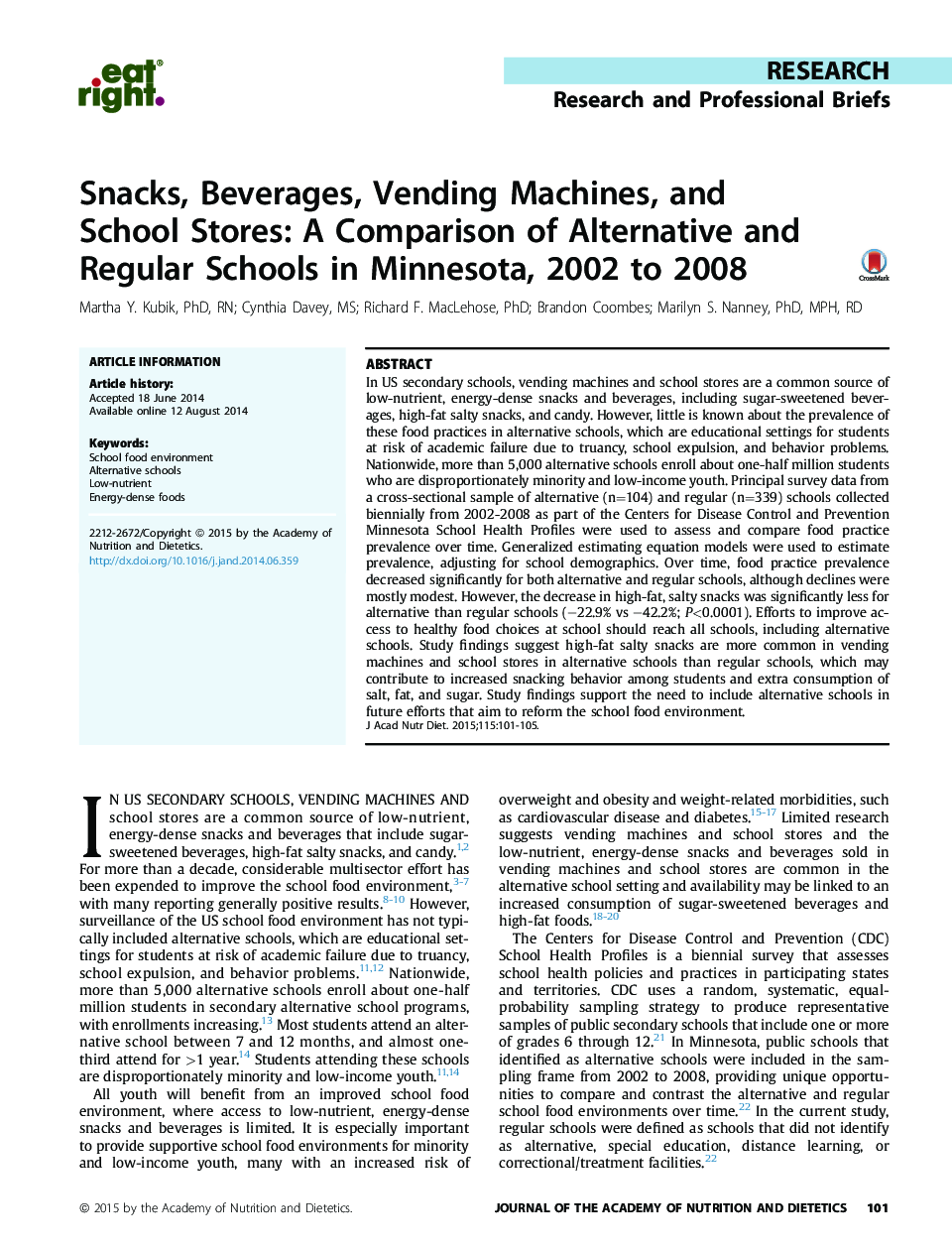| Article ID | Journal | Published Year | Pages | File Type |
|---|---|---|---|---|
| 2653135 | Journal of the Academy of Nutrition and Dietetics | 2015 | 5 Pages |
In US secondary schools, vending machines and school stores are a common source of low-nutrient, energy-dense snacks and beverages, including sugar-sweetened beverages, high-fat salty snacks, and candy. However, little is known about the prevalence of these food practices in alternative schools, which are educational settings for students at risk of academic failure due to truancy, school expulsion, and behavior problems. Nationwide, more than 5,000 alternative schools enroll about one-half million students who are disproportionately minority and low-income youth. Principal survey data from a cross-sectional sample of alternative (n=104) and regular (n=339) schools collected biennially from 2002-2008 as part of the Centers for Disease Control and Prevention Minnesota School Health Profiles were used to assess and compare food practice prevalence over time. Generalized estimating equation models were used to estimate prevalence, adjusting for school demographics. Over time, food practice prevalence decreased significantly for both alternative and regular schools, although declines were mostly modest. However, the decrease in high-fat, salty snacks was significantly less for alternative than regular schools (–22.9% vs –42.2%; P<0.0001). Efforts to improve access to healthy food choices at school should reach all schools, including alternative schools. Study findings suggest high-fat salty snacks are more common in vending machines and school stores in alternative schools than regular schools, which may contribute to increased snacking behavior among students and extra consumption of salt, fat, and sugar. Study findings support the need to include alternative schools in future efforts that aim to reform the school food environment.
